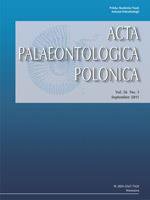New material collected from the Kliphoek Member of the Nama Group (Kuibis Subgroup, Dabis Formation) on Farm Aar, southern Namibia, offers insights concerning the morphology of the Ediacaran organism Pteridinium. Pteridinium fossils previously described as being preserved in situ have been discovered in association with scour-and-fill structures indicative of transport. Additionally, two Pteridinium fossils have been found within sedimentary dish structures in the Kliphoek Member. A form of organic surface with a discrete membrane-like habit has also been recovered from Farm Aar, and specimens exist with both Pteridinium and membrane-like structures superimposed. The association between Pteridinium fossils and membrane-like structures suggests several possibilities. Pteridinium individuals may have been transported before burial along with fragments of microbial mat; alternately they may have been enclosed by an external membranous structure during life.
How to translate text using browser tools
1 September 2011
New Evidence on the Taphonomic Context of the Ediacaran Pteridinium
David A. Elliott,
Patricia Vickers-Rich,
Peter Trusler,
Mike Hall

Acta Palaeontologica Polonica
Vol. 56 • No. 3
September 2011
Vol. 56 • No. 3
September 2011
Ediacaran
Kliphoek Member
Nama Group
palaeoecology
Petalonamae
Pteridinium
taphonomy




